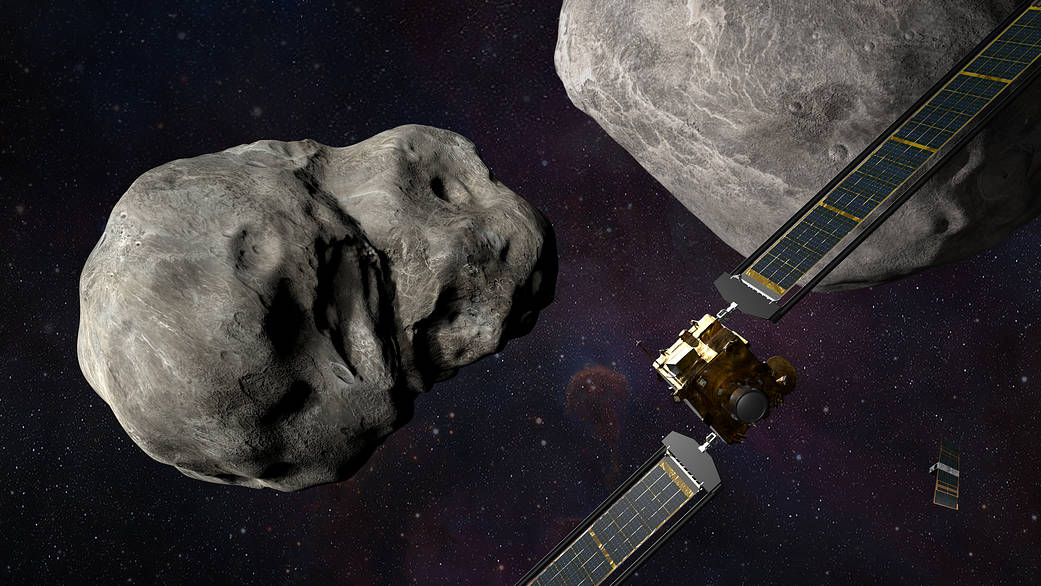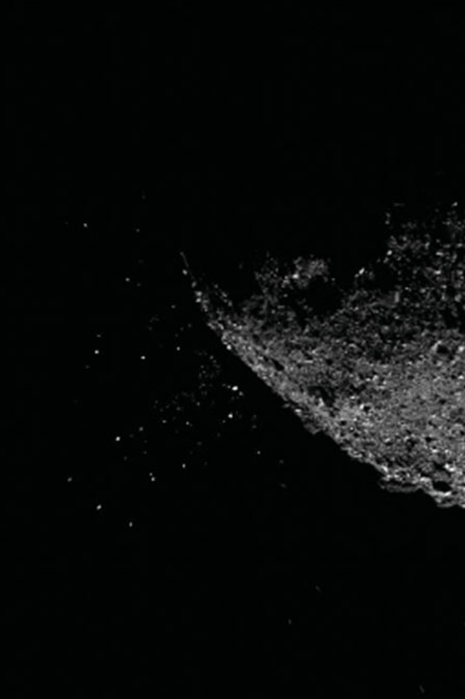News Story
UMD Researchers: DART Probe an Initial Step in Planetary Defense

If an asteroid or comet threatened to collide with Earth, could we find a way to knock it out of our path?
NASA’s Double Asteroid Redirection Test (DART) is providing some initial answers. On Monday, the space agency successfully smashed a refrigerator-sized probe into Dimorphos, an object measuring around 160m in diameter. Dimorphos is a moon of the asteroid Didymos, with which it forms a binary system. At the time of impact, the pair had come within 11 million kilometers (6.8 million miles) from Earth, though they did not present an actual danger of Earth collision.
NASA’s probe scored a near-bullseye, striking the asteroid at a point around 17m (55 feet) from its center. NASA scientists will now monitor Dimorphos in the coming weeks in order to assess how its orbit around Didymos has been affected by DART’s impact.
Several members of UMD’s aerospace engineering department are either directly involved in DART or conducting related research. Brent Barbee, a NASA Goddard researcher who is the dynamics verification and validation lead for the DART project, is a lecturer at the department.
“The bigger context for this is the need to defend ourselves against dangerous asteroids and comets that might threaten to harm or kill people, damage infrastructure, or even cause mass extinctions, if the object is large enough,” Barbee said. “One of the techniques that we’ve long considered for diverting a dangerous asteroid is called ‘kinetic impact,’ where we ram a spacecraft into the object to change its velocity and knock it away from the Earth. DART represents the very first time that humankind has ever tested this technique in space.”
“One of our main goals was to show that we could acquire the object at a distance with our cameras, lock onto it, track it, and then have the spacecraft’s onboard system guide it in during the final hours for a precision impact,” Barbee said. “At the velocity we came in at, which was about 6km per second relative to the target, and with the target being about 160m in size, this was a challenging set of circumstances for performing a precision strike, so we’re thrilled to have achieved such accuracy.”
"The bigger context for this is the need to defend ourselves against dangerous asteroids and comets that might threaten to harm or kill people, damage infrastructure, or even cause mass extinctions, if the object is large enough,” Barbee said. “One of the techniques."
Brent Barbee, DART project dynamics verification. and validation lead and UMD aerospace engineering lecturer.
Besides providing an early proof-of-concept for diversion through kinetic impact, DART has also yielded valuable data for researchers like Yun Zhang, a UMD postdoc and member of the DART Investigation Team. Much of Zhang’s work focuses on the evolution and internal structure of asteroids and other space objects.
The up-close images and data obtained by the probe confirmed that Dimorphos is a type of asteroid known as a “rubble pile,” Zhang said. Such objects, amounting to a hodgepodge of rocks fused together by gravitational and thermal forces, can present a tougher challenge for scientists seeking ways to alter their orbit.
“If it’s a solid, boulder-like object, it’s easier to knock it out of the way,” Zhang said.
Asteroid expert Christine Hartzell, an associate professor in the UMD aerospace engineering department and director of the Planetary Surfaces and Spacecraft Lab, noted that DART represents the first time humans have been able to obtain such an up-close and detailed view of a binary asteroid system.
“Until now, we had a very limited picture of what the surface of a moon like Dimorphos is like,” she said. “DART has given us an unprecedented level of detail.”
Photo credit: NASA/John Hopkins APL/Steve Gribben
Published September 27, 2022











